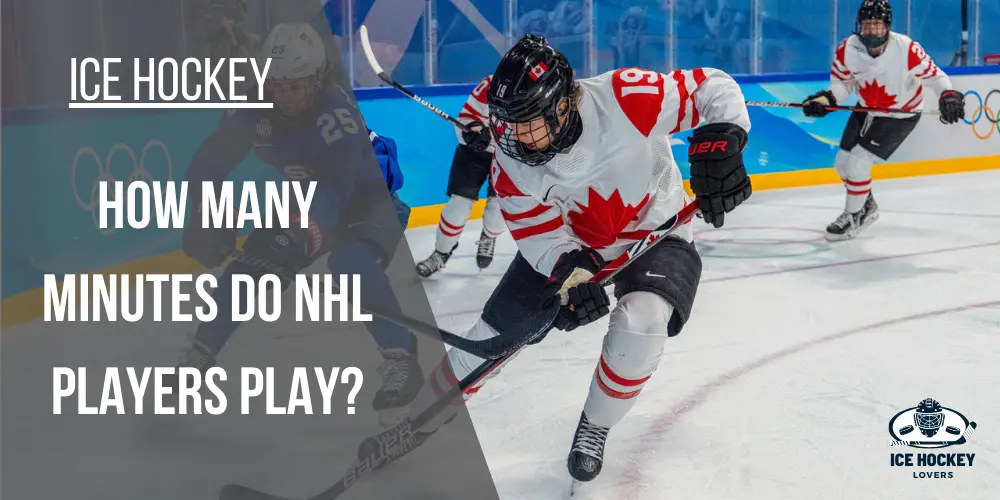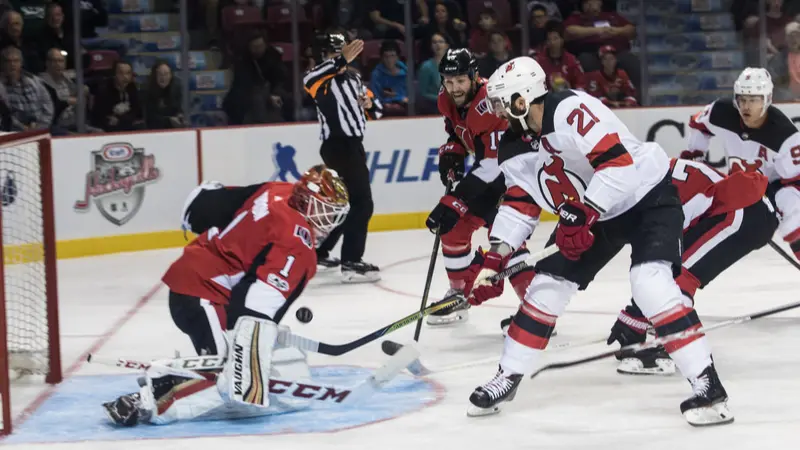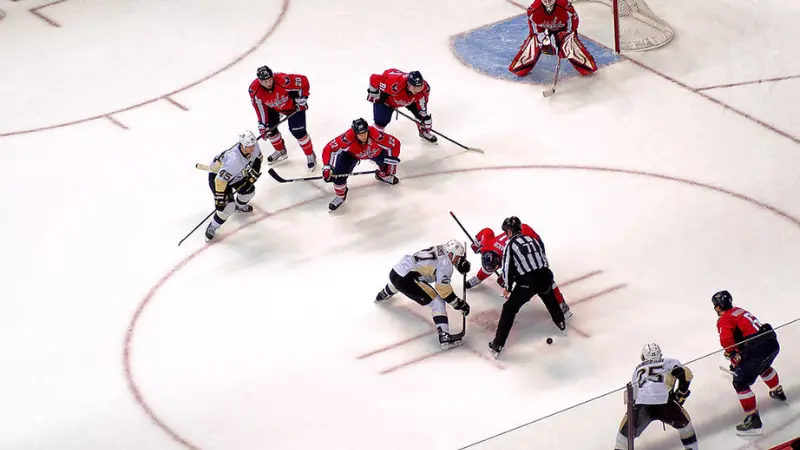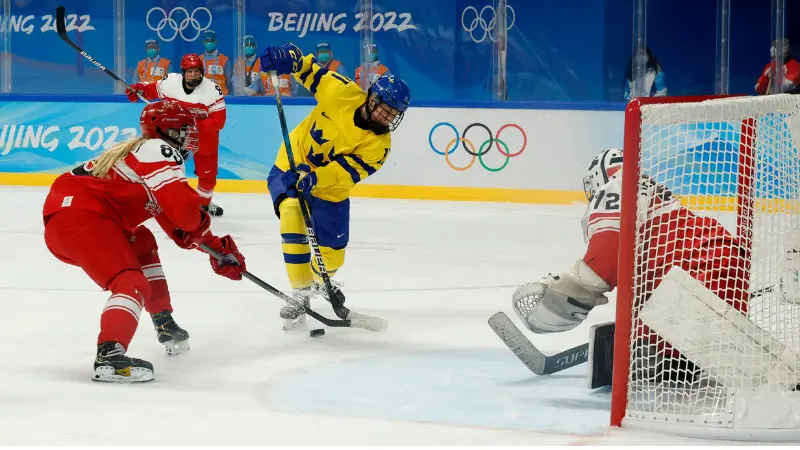How Many Minutes Do NHL Players Play?

A standard NHL game lasts 60 minutes, and each team has more than five players. So, how does the coach divide ice time among all players? How long does a player stay on the ice? Is each player’s playing time different?
The easiest way to solve and understand the players playing time is to look at the player’s playing position. The time is split up between players according to their positions. A defenseman will play for 20:11 minutes on a standard account, and the forward duration is 15:37 minutes. The time players spend in each game varies and depend on factors like the player’s playing skill, team depth, and the coach’s decision.

Although the main factor that derives a player’s ice time is the position, the player is on. Usually, a defenseman plays longer than a forward. Two main reasons for the forward’s short time are:
- Forwards are simply dressed more for each game as compared to the defenseman. There are four rows of forwards (3, 3 each) and three pairs of defensemen pairs (3 each, 6).
- The forward position requires more offensive play and hence needs a high energy level to skate and wears more to play offensively and domineeringly. So, they dressed more as defensemen and stayed less on the ice.
Table of Contents
Forward Position Average Ice Time
The average forward time on the ice is 15 minutes and 37 seconds per night. In the last season, 2021-2022, the most ice-time player was Connor McDavid, whose total TOI (time on ice) was 23:36. This time is composed of power play, penalty kill, and goals. As compared to the first-line forwards, lower-end forwards plays around 11 minutes.

Four forward lines are made on the ice. The best forward line is the first. The second-best forwards are in the second line and the 3rd and 4th lines. To get the average time, that is how each forward line player spends on the ice, and the easy way is to divide the top 400 NHL forwards into groups of four per ice time and then take out the average. Lastly, apply the average ice time on each forward line.
The breakdown of each line time on the ice each night is as follows:
| Forward Lines | Average TOI (Time on Ice) |
| 1st Line | 19:20 |
| 2nd Line | 16:22 |
| 3rd Line | 13:28 |
| 4th Line | 12:35 |
So, calculating the average ice time, the top forwards plays more time, which is 19:20 minutes, and this time decreases on each line. The 4th line that will play the ice is 12:35 TOI.
Defense Position Average Ice Time
The top defensive player in terms of time on ice in the NHL’s recent season is Brent Burns, the most ice-time player of the 2021-22 season. His time on ice is 26:09, which includes goals, power play, and penalty kill time. The all-time top defenseman regarding ice time is Drew Doughty, a Minnesota Wild star player. His TOI was 26:14.

Compares this 26 minutes of both above players with the average NHL defenseman TOI which is 20:11, and this gets more down with the low-end defenseman, whose average TOI is around 16.
All six-game defenders split into three lines of 2 pairs. The 1st or top defenseman plays the most TOI, faces the other team’s top forward players, and plays most often when the team is on the power play or the penalty kill. The last third line plays quickly with less TOI.
The breakdown of all three lines’ TOI is:
| Defensive Pairings | Average TOI (Time on Ice) |
| 1st Pairings | 23:13 |
| 2nd Pairings | 20:00 |
| 3rd Pairings | 17:32 |
Other Factors Involve In Each Player’s Ice Time
- Player’s Talent — Obviously, players are mainly put into different positions according to their skills. The player’s talent determines whether he should be put in the 1st line, 2nd 3rd in back lines, or 1st defense pairing, 2nd 3rd pairing. The simple is that the more skilled player you are, the more you will play.
- Rest Team’s Talent — The rest team’s talent determines how your best players will play. The coach wants to keep the player’s average in a balanced range per the line average we see above.

Despite his high-end skills, the Edmonton Oilers coach would never play Connor McDavid for 24 minutes on the ice. But sometimes, they are forced to play him out for longer times due to the lack of forwarding depth. So, instead of playing out forward, more coaches would like to cover the depth with a balanced lineup so those top forwards can play in a reasonable time of 17-19 minutes. Since NHL seasons are long and tiring, it is advantageous for the coaches not to wear out their players more.
- Whims of Coaches — The coaches always make in-game settings and adjustments based on their feelings and observations, such as noticing how good or bad a player is performing. So it is not unusual for a player who is not feeling well or playing poorly to sit back on the bench and be replaced. Also, it is common to see if coaches note which line and what player is playing well, creating more scoring opportunities. They would like to keep them stay on the ice more.
Moreover, if the team collapses, coaches would like to play their offensive players more to tie up the game. Similarly, if the team dominates the game, they will play out defensive player more. Often a team has both the best offensive and defensive players, so all get a reasonable time.
Frequently Asked Questions
Who Played the Most Ice Time in a Single Regular Season Game?
The NHL started to keep the most ice-time records in 2005. And according to the NHL record, the player who played the most time on the ice was Dennis Wideman against the Vancouver Canucks in the 2013-14 season, where he stayed on the ice or recorded 38:05 minutes.
But, it is also claimed that Pavel Bure is the player who played the most ice minutes, 40:12, against the San Jose Sharks on March 7th, 2001.
Final Verdict on How Many Minutes Do NHL Players Play?
Simply, the top forwards and top defensemen pairings play most ice time in the game as compared to back lines. However, it is better to have balanced time for each line player, especially for top front-end players. So, no player becomes overburdened by playing more time and gets tired no matter how skilled player he is. Hence, it’s always good to cover the forward depth gap in accordance with the rest team’s line average range and give each line a reasonable time to play.

Who is Austin Taylor?
Meet Austin Taylor, your go-to source for everything ice hockey! With a passion for the sport that’s as deep as the ice itself, Austin Taylor brings you concise, expert insights and nitty-gritty details on all things hockey. From gear reviews to strategy breakdowns, Austin Taylor is your trusted guide to navigating the exhilarating world of ice hockey. Get ready to lace up your skates and dive into the game with Austin Taylor as your ultimate companion.



